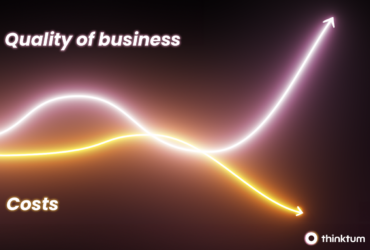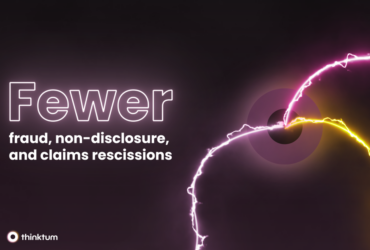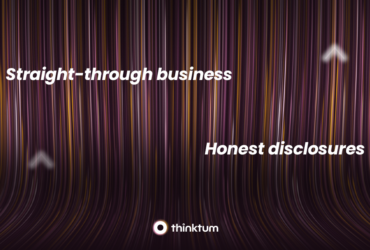Hyper-Personalization Paves the Road to Success

The Internet is a pretty anonymous place. Organizations that have a hyper-personalized customer journey in place find their customers happier than ever. From only listening to their favorite music on Spotify to designing bespoke athletic footwear for themselves, giving people EXACTLY what they want is creating new markets, customers, and products. We’ll break it all down here and advise you on how to get started.
Personalization has always been the most direct line from client to product. Regardless of the good or service, if someone is presented with something they’re sure to like, at an affordable price, chances are pretty good they’ll purchase that item. This type of hyper-personalization really hit its stride in the past twenty years on the Internet, which seems ironic due to the anonymous nature of the web.
Amazon launched its item-based collaborative filtering in 1998. It was clunky and relied on pulling data from other people with similar interests as the algorithm would look at their recent purchases which were then passed along as recommendations. Those were the baby steps that got us where we are now. Learn more about the value of transparency here.
As more and more personalization occurred on the web, people began to rely on it when considering making purchases. With Spotify, the app pulls from your listening activity, your playlist, and which songs you like, then intuits what other music you would be interested in. Every person who owns a virtual assistant technology, such as an Alexa device, can personalize the information they receive to their interests. Personalized weather, news, even volume levels (!) are all delivered when prompted.
Some companies, however, are ensuring that hyper-personalization is a cornerstone of their business. Let’s look at a couple of interesting examples of hyper-personalization online and how they are changing the way consumers shop and interact with their brands. Curious about how we put these lessons to use? Read Augmentation and liz assess – a powerful marriage of form and function.
Hyper-Personalization in Action
The Yes was a lifestyle and clothing app that launched in 2018. They subsequently launched a web version with identical functionality in 2021. End-users completed a detailed questionnaire regarding clothing preferences, sizing, color choices, and price. Then the site would provide curated choices back that all fit within the parameters initially set up. Social media giant Pinterest later purchased the brand and plans to integrate the technology onto its platform to allow instant purchasing power of items shown in posts. Visitors will have many more opportunities to engage with the vendors’ web spaces and buy similar or identical items to what they like in posts.
People are online and scrolling both with and without purpose. This type of technological consumer-focused service brings a deeper layer of commerce to an activity we’re doing anyway. But an underlying question remains:
Are companies offering hyper-personalization such as this a retail operation or a data company?
Or both?
[Customer Journeys] by You
Nike entered this market recently by offering new technologies as part of its product offering. First, they implemented Nike by You, this provides shoppers the ability to fully customize some Nike products when ordering. End-users choose from available options to design footwear or football jerseys and create truly bespoke products. Once completed, the specifications are sent directly to the factory who builds the product and ships it straight from the factory to the recipient. Nike simply gets paid for aggregating the data and delivering it. Customers are more fully connected to the Nike brand, as Nike lowers operating costs by eliminating warehousing and overseas shipping while being able to charge more for personalization.
Nike also built a consumer app that’s personalized to the user and allows them to buy products or shop for gifts, but also delivers lifestyle content such as daily guidance and inspiration through push notifications. Users can choose how they are communicated with, and they receive personalized content including birthday messages as well as access to the global Nike community of Nike fans to support and amplify the brand.
With technology offerings such as these, Nike is meeting its customer where they are – online – and providing a unique experience. Consumers are getting savvier and now expect some level of personalization and customization in every aspect of their lives. Retail companies are stepping up to fill the void by developing technology their customers expect – recommending products, personalizing the customer journey, and creating a bridge to the customer’s social media sites. Companies such as Nike are no longer pure retail plays, and the hybridization with technology has created a new generation of modern organizations where the line between retailer and technology becomes blurrier every day. The upside however is obvious.
What Does This All Mean?
Hyper-personalization isn’t just found with sporting goods or clothing retailers. Fast food kiosks are popping up like toadstools. Equipped with an ordering screen with photos of available items, diners simply order what they want and food preparation staff complete the order. Diners can choose to personalize their meal using the menu options available. It’s up to the restaurant chain how much personalization they’ll provide.
At the end of the day, we’re seeing consumers be offered more and more personalization and that will only continue into the future, for many reasons:
- Online retailers offer products you may be interested in, based on past purchases
- Every retailer recommends complimentary items as part of the online sales process
- Many consumers are pretty lazy or too busy, and – consciously or not – rely on retailers to tell them what to buy
- Every online retailer will realize that adding or supercharging sales channels means higher revenue
The unique products created when clients design their own “offering” is hyper-personalization in action. Clients get a one-of-a-kind product that they design themselves, the sales process is fully automated with prices that can be set higher, with the products shipped directly from the factory. In fact, Nike is barely involved with the sale beyond taking credit card info. Consumers are so thrilled with their custom items; they share them on their social media channels, thereby becoming individual brand ambassadors. Personalization is successful because people get exactly what they want, and don’t seem to mind paying extra for it. After all, what they design is perfectly unique, and even gives them a certain cachet as “fashion designers”.
For an organization like thinktum, we look at personalization in two ways:
- First, consumers or end-users should have a hyper-personalized experience to find what they really want faster.
- Second, organizations that provide a level of personalization for their products can continually personalize every experience based on the knowledge they have, and don’t have to wait to analyze the data they’ve captured.
thinktum’s technology allows organizations to adjust offerings or edit how the customer moves through their application, website, or software in a fraction of the time it took in the past. Organizations, such as insurers, for example, can make edits as required which will positively affect their bottom line. But it isn’t just revenue that gets a boost, they may get a rise in their reputation as a modern, efficient organization. Word travels fast in every industry. Those who look to the future may also get more media attention because of their apparent bravery.
What this means to thinktum
When we set out to build our modular software suite named liz, we knew that we had to accomplish two goals. First to develop a robust triage tool that could quickly assess and crunch a lot of data; and second, to build a better decision module. As data is entered, our liz data module breaks the data down and provides a decision outcome through the power of artificial intelligence (AI) and machine learning (ML).
Here’s How
As customers engage with the software, AI tracks their answers, preferences, and their behavior. When prompted, the system then makes recommendations based on the parameters set. People want what they want when they want it. Online marketers want to sell what people want. Without a crystal ball, artificial intelligence is our next best option to be able to do that. We built liz as the tool to provide hyper-personalization to any customer journey, regardless of the platform or industry. A customer journey can take place in any context, and for anything.
When we discuss personalization, it’s important to realize that whatever product an organization wishes to sell may not be exactly what its clients want to buy. For us, personalization is the bridge between them both and should be tailored and marketed as such. That is especially true when discussing an important large purchase like insurance, or financial investment.
We believe that hyper-personalization will be ubiquitous in the future. People adopted it and will demand it on platforms slow to change. Pretty soon, these kinds of journeys will be built into every purchase, and we’ll wonder how we ever made any decisions without it.
The Power of Choice
Henry Ford once spoke about his Model T and said, “Any customer can have a car painted any color that he wants, so long as it is black.” Ford was clearly not concerned about creating a personalized customer journey, but those days are long gone now. Today there are so many choices we need technology to help us pare them down because it’s impossible to decide. It’s up to each organization to choose how they will treat their customers – by offering curated options that lead to easier decisions and a guaranteed sale. That old adage of “give the people what they want” has never been truer.
If you could offer your clients EXACTLY what they want, in the most direct route possible, how could you NOT succeed? We can help you get here.
You can learn more about thinktum’s modular solution suite, named liz, on our LinkedIn page.





